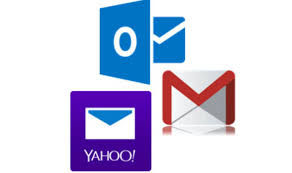Email is NOT Dead
- VBA
- Apr 11, 2019
- 3 min read
There are still plenty of ways to create marketing emails that actually get read. Basically, you'll need to follow these steps:
Step 1: Get permission.
This step is vital. getting into someone's inbox is like being invited into their home, and it should be treated accordingly. Consumers must opt in to receive your emails, or you risk your emails being labeled as spam (and never read) or even hefty fines under the CAN-SPAM act.
Because this step is largely about convincing the consumer that your emails are worth subscribing to, spend some time honing your language and graphics for the permission request.
Step 2: Understand your audience.
Knowing who you're emailing and why is almost as necessary as getting permission, since it will determine your content, how often you send blasts and to whom you send which emails.
Your email campaigns will depend on your business and what it offers.
Pay attention to buying trends, demographics and customer feedback if you have access to it. If you lack customer feedback, consider sending out a survey to gather information on what your customers want to see from you in the emails and basing your content on those responses.
Step 3: Have a genuine reason for sending emails.
Many companies fall into the pit of marketing for the sake of marketing, rather than putting effort into a campaign that means something for the company. If you're jumping into email marketing just to keep up with the Joneses, your consumers are going to feel that and unsubscribe.
Authentic marketing is more important than ever, so you should sit down and understand your vision and what you want the email campaign to accomplish. Step 4: Provide good content.
Perhaps this goes without saying, but it's hard enough getting people to sign up for your emails; it's even harder to get them to stay. As the saying goes, content is king, and it should not be overlooked. Make sure what you're sending is personalized, engaging, and relevant to both your readers and your company.
Try to put yourself in the reader's shoes and only send emails you would want to read. Remember to keep it simple.
Step 5: Monitor your analytics.
Many email marketing services come with analytics capabilities or integrate with third-party providers like Google Analytics. The three most important analytics for email marketing are open rate, click-through rate and unsubscribes.
Your open rate shows how many people open your email and will tell you how engaged your readers are. If the rate is low, you'll need to identify where your emails are missing value for your readers and work on developing a stronger personal relationship with them.
The click-through rate (CTR) shows how many people clicked on any links included in your email. A low CTR will reflect poor or mistargeted copy or links your readers are not interested in, so you should focus on improving your copy, seeing what types of links your readers do click on, and modeling your emails accordingly.
The unsubscribe rate is just that – how many people are clicking "unsubscribe" at the bottom of your emails. Check your unsubscribe rate in relation to your opt-in rate. If the unsubscribe rate is high, you need to do some serious digging to find out where you're dropping the ball between getting permission and this point, because this shows that people are engaged enough to opt in but getting lost in the middle.
Getting a marketing email to the consumer is not easy, but if you remember your goals, keep it simple, and watch your analytics, you'll be well on your way to launching nothing but successful campaigns.






Comments